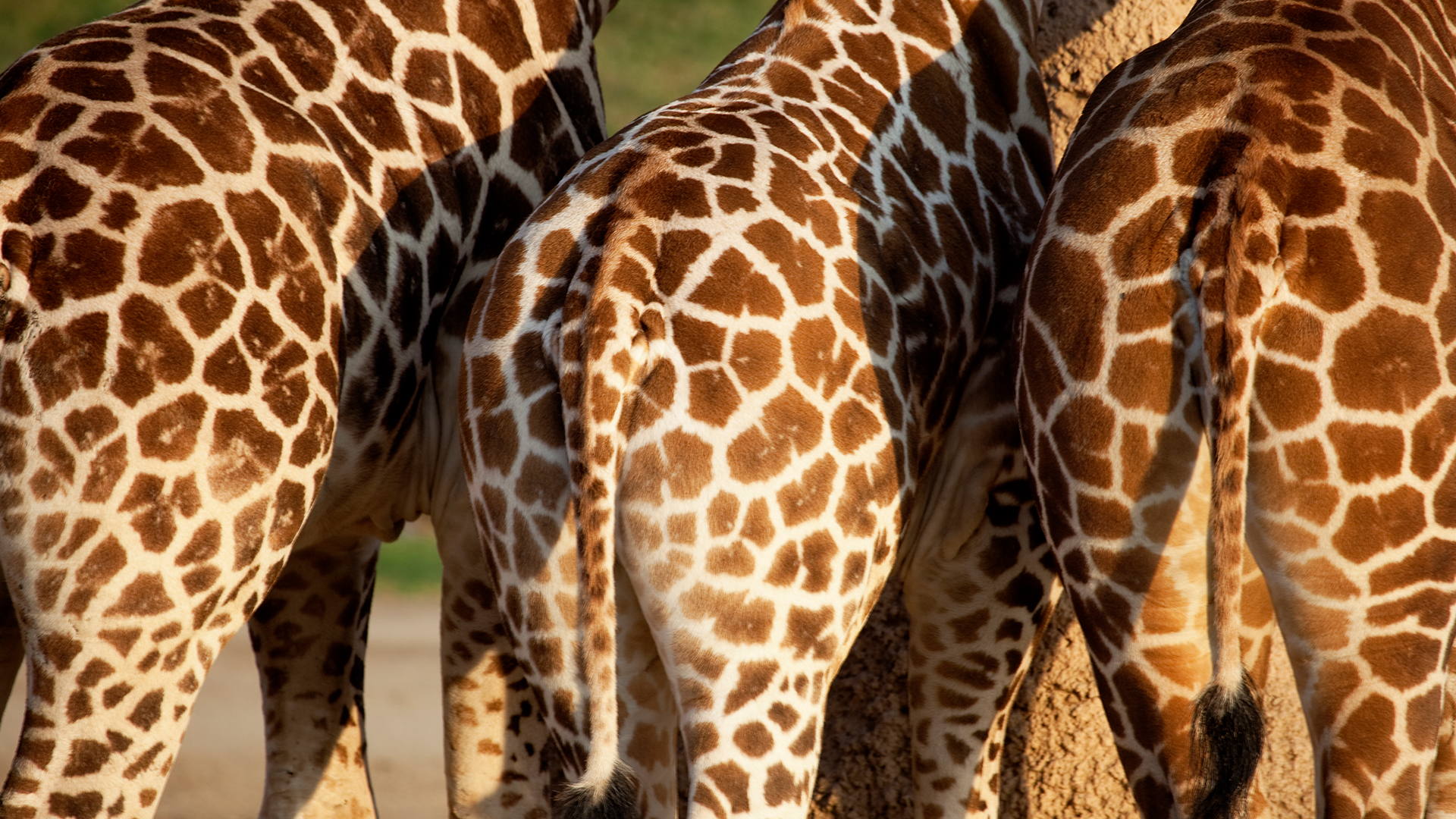Viruses lurking in giraffe and lemur poop could lead to new antibacterial drugs, scientists say
Scientists uncovered viruses that infect bacteria, called bacteriophages, in animal poop and are testing whether they could work as antibiotics.

Viruses scooped from the poop of giraffes, lemurs and long-whiskered mammals called binturongs could be useful for killing drug-resistant bacteria and preventing further antibiotic resistance, scientists say.
Researchers from the University of Sheffield in England have been hunting for bacteria-infecting viruses, known as bacteriophages, in animal feces from Yorkshire Wildlife Park, a wildlife conservation and rehabilitation center in Branton, England. The park houses about 475 animals representing more than 60 species, giving the scientists opportunities to search for bacteriophages — called "phages," for short — in a variety of exotic excrement.
Graham Stafford, chair of microbiology at the University of Sheffield and leader of the research, told Live Science that the idea came to him while he was visiting the wildlife park with his family. When he reached out to the park's staff about the project, "they were keen to help," he said.
Why go digging for phages in animal poop? Phages are the key ingredient in an emerging treatment for bacterial infections, known as phage therapy. In clinical trials and extreme cases where other treatments have failed, doctors have used phages as an alternative or a supplement to traditional antibiotics. Phages typically kill disease-causing bacteria by invading the germs' cells and slicing them open from the inside.
Related: Dangerous 'superbugs' are a growing threat, and antibiotics can't stop their rise. What can?
These phages can have very narrow targets — as few as one or a few bacterial strains within one species — which means they don't pressure a slew of bacteria to resist treatment, as is the case with broader-spectrum antibiotics. Phages do still drive bacterial evolution, but when bacteria evolve to escape phages, the targeted bacteria tend to then become more vulnerable to traditional antibiotics, Stafford said.
Stafford and his colleagues are aiming to discover new phages in the environment — and yes, in animal dung — to add to the variety of phages that can be used in treatments. "They tend to target only certain species, or even certain strains, so the more that we've got … then the more chance we've got of taking this therapy to a point where we can cover as many bases as possible," he told Live Science.
Get the world’s most fascinating discoveries delivered straight to your inbox.
Previously, the researchers isolated phages from human mouths, as they were looking for ones that could treat common bacteria that infect the roots of teeth. In addition, they've looked for phages "in various farm animal effluence," such as that of cattle and chickens, Stafford said. And now, the team has been working with Yorkshire Wildlife Park for a year or so and has gathered phages from Guinea baboons (Papio papio), giraffes (Giraffa), Visayan pigs (Sus cebifrons) and binturongs (Arctictis binturong), as well as various lemurs, according to a statement.
Once the researchers have a poop sample, they add water, blend it into a slurry, and then heavily filter the mixture until only viruses remain. "So now it's a far way from being smelly," Stafford noted.
Then, they expose bacteria in lab dishes to the filtered-out phages, to determine which germs the phages can infect; this reveals which phages would be useful for human treatments. They also extract DNA from the phages, to compare their genetics to those of previously cataloged viruses; test their stability and heat resistance; and take microscopic images to see their shapes and sizes.
The team is currently focused on finding phages that can help treat foot infections in people with diabetes, which is a common complication for those whose blood sugar levels aren't adequately kept in check with medication. Elsewhere in the world, clinical trials are underway or about to begin to test the phage therapies for such infections, and some completed early-stage trials suggest that the treatment is safe in humans.
"It is important not to think that you're going to take poo and put it on people's feet — in the end, you're making a product, like a medicine or an ointment," Stafford said. So, regardless of where the phages in these treatments were originally found, the ones that end up in medicines have been purified, grown in the lab and safely stored under controlled conditions.
Stafford and his colleagues have yet to publish any studies related to their work with the Yorkshire Wildlife Park, but they will likely do so in the coming months, Stafford told Live Science. Meanwhile, they are working toward formulating a cocktail of phages that could be tested as an antibacterial treatment.

Nicoletta Lanese is the health channel editor at Live Science and was previously a news editor and staff writer at the site. She holds a graduate certificate in science communication from UC Santa Cruz and degrees in neuroscience and dance from the University of Florida. Her work has appeared in The Scientist, Science News, the Mercury News, Mongabay and Stanford Medicine Magazine, among other outlets. Based in NYC, she also remains heavily involved in dance and performs in local choreographers' work.


